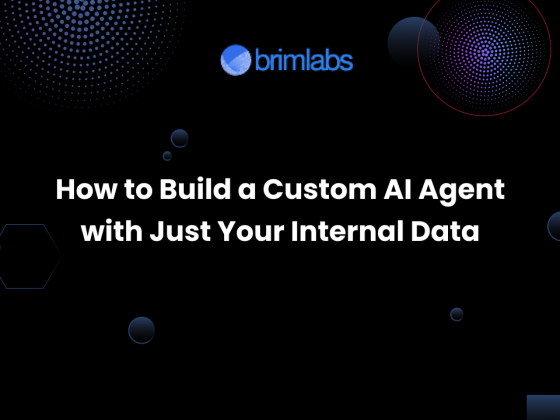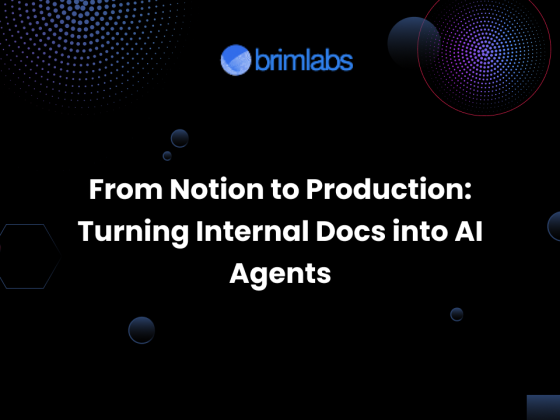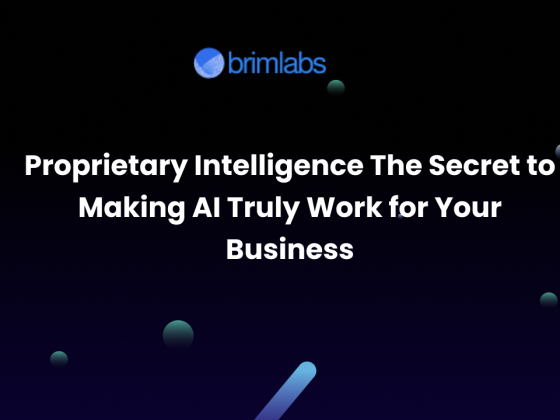Startups are in a race to integrate AI into their products and operations. From automating support to building AI copilots, the possibilities are exciting, but not without pitfalls. At Brim Labs, we’ve worked with early-stage and scaling teams across FinTech, SaaS, Healthcare, and E-commerce, and we’ve seen a pattern: startups often make the same avoidable mistakes with AI agents.
Here’s a deep dive into the five most common missteps, why they happen, and how you can steer clear of them.
1. Chasing Hype Instead of Solving a Real Problem
The Mistake:
Founders often approach AI with a “cool tech first, use case later” mindset. They deploy agents without a clearly defined problem to solve, resulting in flashy demos but little to no real adoption.
Why It Happens:
AI buzzwords are everywhere. When competitors announce agents or copilots, there’s pressure to ship fast, even without product-market fit.
What to Do Instead:
Anchor AI initiatives in user pain. A good AI agent automates a painful bottleneck, not just a feature wishlist. Whether it’s triaging customer tickets or surfacing insights from internal docs, your agent should start with a clear ROI story.
Example:
Instead of building a general support bot, one of our FinTech clients developed an AI underwriting assistant that focuses solely on eligibility checks. Adoption hit 92 percent in three weeks.
2. Ignoring Data Quality and Structure
The Mistake:
Feeding unstructured, unlabeled, or siloed data into your AI pipeline leads to inaccurate or hallucinated responses. Many startups try to build AI agents on top of messy Notion docs, outdated PDFs, or incomplete databases.
Why It Happens:
Startups move fast and often don’t invest early in data hygiene. There’s also a misconception that LLMs can “figure it out” magically.
What to Do Instead:
Treat your internal data like a product. Clean, structure, and tag critical knowledge bases. Implement simple taxonomy and version control. Use vector databases like Pinecone or Weaviate to improve retrieval quality.
Quick Win:
Deploy a Retrieval Augmented Generation (RAG) pipeline to keep the agent grounded in up-to-date internal content.
3. Overengineering for Scale Too Early
The Mistake:
Founders often aim to “build for scale” from day one, spending months on infra, orchestration, and agent tooling, before validating if users even want it.
Why It Happens:
Influence from big tech playbooks. Early-stage teams mimic OpenAI, Anthropic, or Microsoft-level setups without their resources or needs.
What to Do Instead:
Start scrappy. Use off-the-shelf APIs (OpenAI, Claude, Groq) to test functionality. Limit agent scope and iterate. Build your agent like an MVP, then refactor for scale once you have usage data.
Tip:
Use LangChain or LlamaIndex only after validating use cases. You might not need them in v1.
4. Neglecting Security, Privacy, and Compliance
The Mistake:
Storing sensitive data in prompts or returning personal information without proper checks can land you in regulatory trouble, especially in FinTech, Healthcare, and HR Tech.
Why It Happens:
Many startups don’t have in-house data governance expertise, and early experiments skip over PII masking, prompt injection protection, and API abuse controls.
What to Do Instead:
Incorporate compliance from the beginning. If you’re working with HIPAA, GDPR, or SOC2 environments, bake in redaction, logging, and role-based access into your agent workflows.
Frameworks to Explore:
Use tools like Presidio, Guardrails AI, or Rebuff to secure your LLM usage.
5. No Human-in-the-Loop or Feedback Mechanism
The Mistake:
Startups deploy AI agents as one-and-done systems. Without feedback loops, the agent can’t learn from user inputs or improve over time. This often leads to declining trust and abandonment.
Why It Happens:
Teams underestimate the importance of iteration and user feedback in AI systems. They treat agents like static software, not evolving copilots.
What to Do Instead:
Design for continuous learning. Include thumbs up/down, editable outputs, or fallback to human support. Feed this feedback into agent improvement cycles.
Insight:
The best-performing agents behave like interns, constantly learning from their seniors (your users).
Final Thoughts
Startups that treat AI agents as shiny toys instead of outcome-driven products will lose time, trust, and traction. The good news? Avoiding these mistakes isn’t hard, it just requires discipline.
At Brim Labs, we help startups build AI agents the right way, from RAG pipelines and LLM tuning to secure, human-in-the-loop deployments. If you’re exploring AI for your business and want a partner who moves like a co-founder, let’s talk.
Looking to build your first AI agent MVP? Let’s make it real: brimlabs.ai











